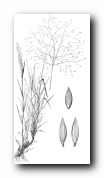
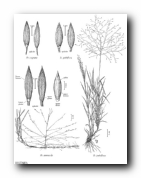
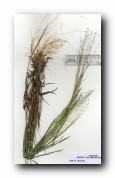
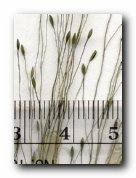
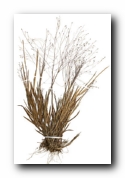
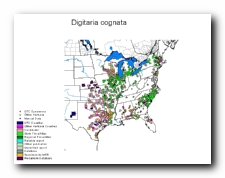
40" Rows:
Broadcast:
Sandy:
Loam:
Clay:
Habit: Tufted perennial, with very diffuse panicles, which fall off and become tumbleweeds. Culms: Decumbent, much branched below, 30-70 cm. tall, pale green, leafy, very brittle, felty pubescent at the base. Blades: Flat, rather rigid, usually glabrous, 5-8 cm. long, 2-6 mm. wide, margins scabrous, white and often wavy. Sheaths: Shorter than the internodes, the upper usually glabrous, lower sheaths thinly to felty pubescent. Ligule: Membranous, 1 mm. long. Inflorescence: Panicle one third to one half the entire height of the plant, purplish, short-exserted, very diffuse, as broad as long or broader; the capillary scabrous subflexuous branches at first ascending, soon widely spreading, naked below, bearing single spikelets at the extremities of slender pedicels, pilose in the axils. Spikelets: Narrowly elliptic, 2.5-3 mm. long, acuminate; 1-flowered, solitary, on a 3-angled scabrous pedicel, 1-4 cm. long. Glumes: First glume minute or obsolete, second glume 3-nerved, nearly as long as the 5-7 nerved sterile lemma, both with a stripe of appressed silky pubescence between the nerves and on the margins, or the hairs becoming loose and spreading especially on the margins, very variable in the same panicle. Lemmas: Sterile lemma empty or enclosing a minute nerveless rudimentary palea; fertile lemma cartilaginous, elliptic, acute, brown, the delicate flat hyaline margin enclosing a palea of like texture. Fruit: Grain, free within the lemma and palea, about 2.5 mm. long. Habitat: Dry soil and sandhills, sand prairies. July-September.
Special Notes: